One of my favorite aspects of visiting Walt Disney World and Disneyland as a kid was the exciting future it depicted. Everywhere you looked, there were cool monorails and fun ride systems that (in theory) could be put into place at home. This was true at EPCOT Center and especially in Tomorrowland. This “world on the move” was going to be amazing! I was too young to visit the Monsanto House of the Future, but that vibe was everywhere. Technological advances would lead us into a glorious new age.
David A. Bossert examines this remarkable Disneyland attraction in his new book The House of the Future: Walt Disney, MIT, and Monsanto’s Vision of Tomorrow. Through a collection of awesome photographs and details, Bossert reveals the House of the Future to Disney fans that never experienced it. Opening on June 12, 1957, this walkthrough lasted for just over 10 years before the new Tomorrowland arrived in 1967. It still resonates today through a recent Wonderful World of Mickey Mouse “House of Tomorrow” cartoon and other references to the plastic world it promised.
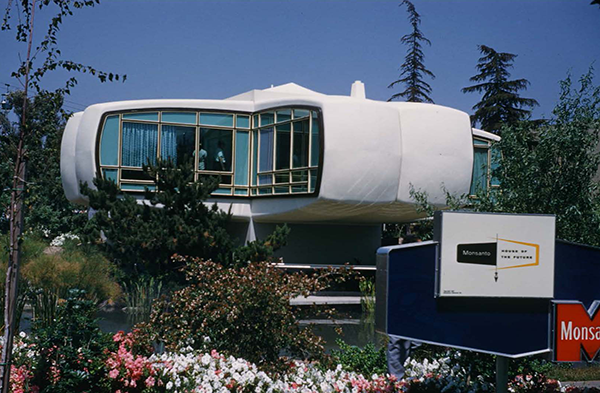
I’m amazed at the amount of cool photos of every aspect of the House of the Future that Bossert uncovered for this book. This includes exterior shots, views of every room, promos, and concepts with many in full color. It functions well as a coffee table book where you can just give a quick look at the interesting pictures. However, there’s a lot more to uncover than just some fun images. There’s so much information that adds depth and historical context to everything within this Disney attraction.
Bossert starts by giving a history of plastic and expectations for how it would change our lives. While the House of the Future showcased an exciting tomorrow, it was primarily a corporate showcase for Monsanto and the potential for plastic. We’ve since learned that plastic has serious environmental implications; I appreciate the Bossert clarifies that fact throughout the book. Back in the 1950s, this presentation showed Monsanto’s view of the possibilities for their growing product in the world.
This book never feels like a dry history lesson and moves quickly from concept to construction. I enjoyed all the black-and-white photos of the construction of a place that seemed like it came from another planet. John Hench’s description of the House of the Future as resembling a football huddle with four players bent over is a bit crude but pretty accurate! Bossert describes all the testing that was needed to ensure this structure could handle so much stress on it every day. He aptly points out that any issues or accidents would be disastrous to the industry.
The centerpiece of this book is the tour through each room of the house and what guests experienced. It’s a great way to take us inside the attraction and avoid giving a dry history lesson. I agree with Bossert’s description that this is “intended to be the most immersive way to replicate the tour of this attraction in a book format“. He starts this section with a map that clearly outlines how visitors experienced the house. It is silly to note the photos labeled with the “Housewife of the Future” and the “Husband of the Future” as they experience each room. Despite its forward-thinking technologies, we still needed more progress in the way we approached household roles in 1957.
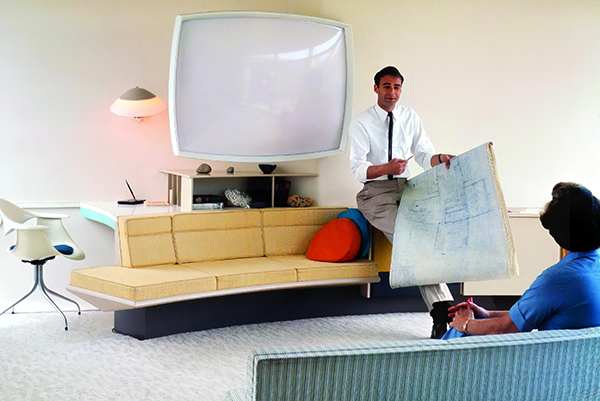
It’s also interesting that Imagineers closely worked on a remodel in 1960 just three years after opening. This was one of several remodels that happened during its decade in operation. I appreciate that Disney continued to tinker with the design of each room. Certain furnishings wouldn’t seem out of place today, but others seem weirdly uncomfortable and small. The refrigerator looks too small for a full kitchen, and the beds could use help. Even so, Bossert provides many examples of ways the House of the Future predicted modern conveniences, including communications.
Bossert also presents the crowds on opening day and how popular this attraction was at Disneyland. There’s almost no sign of this attraction today beyond a few concrete remnants near Pixie Hollow. It was so durable that removing this structure was quite challenging. We conclude this story with a look at the house’s ongoing legacy, including a close view of the cool suite at the Howard Johnson Anaheim Hotel.
The House of the Future has always been a curiosity for me as part of a Disneyland I never experienced. My first visit there was in 1985 when I was nine, which was 18 years after it closed. Bossert brings this fascinating past to light in this book that’s a must for the collection of any Disney fan. It also works if you have an interest in the history of plastics or mid-century architecture. It’s inspired me to dig further into Disneyland history, especially a Tomorrowland that I never witnessed in person.
If you’re interested in a copy of this book signed by David A. Bossert, go to the Old Mill Press site and use the code “FRIEND5” to save $5 at checkout.
Related Articles: House of the Future
Claude Coats: Walt Disney’s Imagineer by Dave Bossert
Disney Theme Parks and America’s National Narratives by Bethanee Bemis
Walt’s Apprentice: Keeping the Disney Dream Alive by Dick Nunis
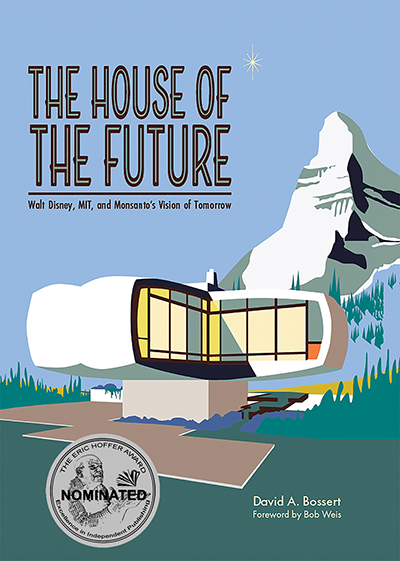
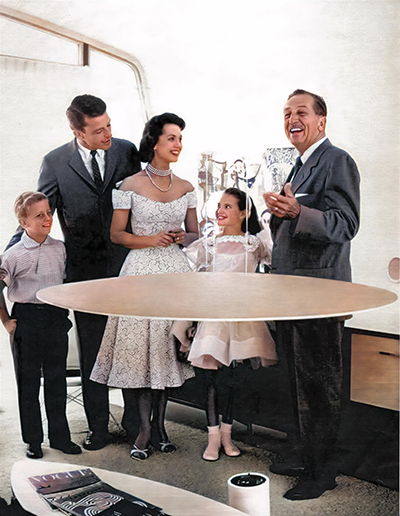
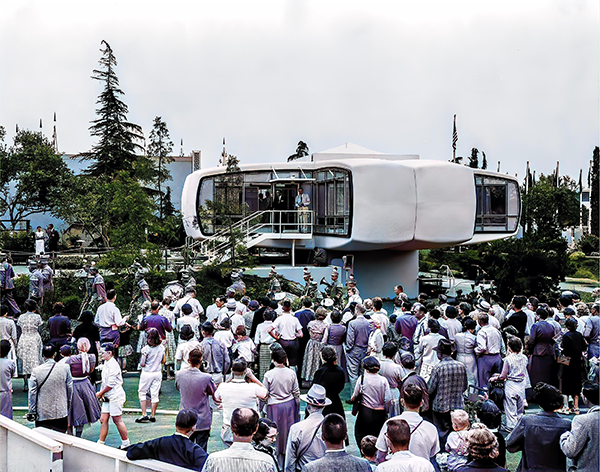



Leave a Reply